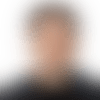Offseason stories are inevitably dominated by what's new: coaching changes, player acquisitions and draft picks. But the biggest area for potential growth on each roster comes from within. This week, I've taken a look at one homegrown talent from each team who could provide a huge boost by taking the next step in his development. After identifying a key player for AFC clubs yesterday, I've turned my attention to NFC teams today. Who will follow in the footsteps of the breakout players from last year's list, like Sheldon Rankins, Tyler Lockett and Cory Littleton?
For the purposes of this exercise, I'll only look at players who are still on their rookie contracts and whose growth would be welcomed by their organizations. All stats are according to Pro Football Focus.
Arizona Cardinals: Budda Baker, safety. After a sensational end to his rookie season, Baker was talked up as the heir apparent to Tyrann Mathieu last offseason. Like most 2018 storylines in the desert, it didn't quite work out that way. Baker was used almost exclusively as a slot cornerback and didn't excel. The team is expected to use him more as a free safety this year, playing him in multiple spots to take advantage of his big-play capability. Baker and fellow starting safety D.J. Swearinger should set a nasty tone for the Cardinals' defense.
Atlanta Falcons: Isaiah Oliver, cornerback. On a relatively static roster that could have only one new defensive starter, Oliver stands out. Coach Dan Quinn confirmed the 2018 second-round pick will start and expects him to take a "step up" in his second season after two starts and 240 snaps as a rookie. It wasn't so long ago the Falcons thought they were set at the position for years to come, with Robert Alford and Jalen Collins behind Desmond Trufant. Only Trufant remains of that trio, and Oliver is likely to be targeted early and often because of his lack of experience. In a pass-heavy, QB-dominant division, only the teams with the best cornerbacks survive.
Carolina Panthers: D.J. Moore, wide receiver. Quick, name the No. 1 receiver in Carolina. (If you didn't name Moore, you made a mistake.) Moore put up 491 yards over the second half of a rookie season that took time to get untracked. He eventually displayed the quickness to get open, ball skills on leaping grabs and, especially, the ability to make the first defender miss with runs after the catch. Cam Newton has one of the NFL's shakiest receiver groups on paper, so the opportunity will be there for Moore to go straight from "solid rookie season" to 1,200-yard receiver. Is the 22-year-old ready?
Chicago Bears: Mitchell Trubisky, quarterback. The numbers were there in Trubisky's first season (24 TDs against 12 INTs, 66.6 completion percentage) with Matt Nagy. The play-to-play grading was less impressive, which is why he ranked 36 out of 38 PFF qualifiers at quarterback and 19th on my year-end QB Index. Trubisky was undoubtedly more comfortable and more consistent than he was during his rookie campaign, taking a significant step forward as a starter who didn't sink his offense.
The step from "good enough" to being an asset will be more difficult. Now that opponents have a season's worth of tape of him operating Nagy's system, Trubisky isn't likely to see as many open receivers and perfectly designed plays, so he'll have to develop at seeing the entire field, anticipating routes and reading defenses. For a quarterback whose signature trait is accuracy, ranking 26th in PFF's adjusted completion percentage isn't good enough. It's unrealistic to expect Nagy and the Bears' defense to be as dominant in 2019, but Trubisky can make up for it with another step up the QB ladder.
Dallas Cowboys: Michael Gallup, wide receiver. Gallup, a third-round pick in 2018, took over Dez Bryant's old route tree in Dallas down the stretch last season and did enough to justify a permanent spot in the starting lineup. With Amari Cooper attracting the attention of a No. 1 receiver, Gallup can body defenders in tight coverage and sneak deep down the sideline. He scored a key red-zone touchdown against the Seahawks in the Wild-Card Round and put up 119 yards in the loss to the Rams in the Divisional Round. Gallup makes this list partly because I don't trust Dak Prescott's other receiving options behind Cooper. It's Gallup or bust.
Detroit Lions: Frank Ragnow and Graham Glasgow, interior offensive linemen. Ragnow, the 20th overall selection a year ago, has switched spots with three-year starter Glasgow in the early days of OTAs. Playing center was the expectation when Detroit made Ragnow its first pick under head coach Matt Patricia. While the Lions made strides in their running game when Kerryon Johnson played in 2018 (a knee injury limited him to just 10 games), their offensive line looked better on paper than it did on the field. This switch could be a big step in justifying all the resources general manager Bob Quinn has poured into getting better up front.
Green Bay Packers: Kevin King, cornerback.Jaire Alexander would be another obvious pick for the Packers. But the 2018 first-rounder already played at such a high level as a rookie -- with Bill Belichick expecting him to be among the game's elite corners for years to come -- that Packers fans should think bigger. If King stays healthy, suddenly the Packers could have the most exciting young cornerback duo in football. Limited to just 15 games in two seasons, King has shown he has the size (6-foot-3) and toughness to match up with bigger boundary receivers. General manager Brian Gutekunst and defensive coordinator Mike Pettine (both in Year 2 of their roles) have tried to build an identity with a young, highly drafted secondary (three top-45 picks used on DBs in the past two drafts). King's health is key to their vision coming together.
Los Angeles Rams: Brian Allen and Joseph Noteboom, offensive linemen. There is so little new with the Rams that I expect most training-camp columns to be about: a) Todd Gurley's knee; b) the Super Bowl hangover; or, c) the team's new interior linemen. Let's dispatch with the one concrete topic.
Noteboom and Allen were taken in the third and fourth rounds of last year's draft to play left guard and center, respectively. (Noteboom could also be a candidate at left tackle when Andrew Whitworth retires.) They were groomed for one season before Rodger Saffold left in free agency and center John Sullivan's contract option was declined. These are the transitions that good organizations handle without disruption, and there is little internal consternation about the changes. Rams offensive line coach Aaron Kromer has already proven to be a terrific developer of talent, helping last year's line play with impressive cohesion.
Minnesota Vikings: Dalvin Cook, running back. Limited to 15 games over his first two seasons because of injuries, Cook has already put up 1,364 yards from scrimmage on 258 total touches. That production is a hint of what he could do if healthy for an entire season, with his ability to make defenders miss in the passing game already among the league's best. Just four running backs who had at least 25 percent of their team's carries had a higher "elusiveness" ranking by PFF in 2018. He was excellent creating missed tackles in space, even if some of the power and yards after contact he showed as a rookie were diminished in his first season after ACL surgery. If he's this good at less than 100 percent, the ceiling here is scary. It wouldn't be a surprise if this Vikings offense -- guided by new offensive advisor Gary Kubiak -- runs primarily through Cook.
New Orleans Saints: Marcus Davenport, defensive end. It is disarming to witness a Saints defense without any obvious holes on the depth chart. The biggest question on the board is whether Davenport evolves into a useful role player or becomes the next Jadeveon Clowney, winning with extreme athleticism and strength. The flashes that Davenport showed during an injury-riddled rookie year were breathtaking. Playing opposite Cameron Jordan, Davenport has already made some fellow professionals look slow as hell on the Superdome turf. A full season from him could be the difference between a good Saints defense and a great one.
New York Giants: Evan Engram, tight end. There are times when Engram looks like the future of the tight end position, like a sleeker, more explosive Zach Ertz. Then there are the other times, when the mental errors pile up. Those mistakes led to Engram playing a slightly lower snap percentage than fellow Giants tight end Rhett Ellison over the course of the 2018 season.
Engram's yards per target in 2018 (9.0) compared favorably to Ertz and Travis Kelce, so this season's goal should be about Engram's quantity matching up to his quality. With no Odell Beckham Jr. around to eat up targets, Engram won't need to play that much better to top 1,000 yards. He'll get his looks. More than anything, though, he has to prove to coach Pat Shurmur that he's trustworthy enough to stay on the field more than 61 percent of the time.
Philadelphia Eagles: Derek Barnett, defensive end. It's showtime for Barnett. The 2017 first-rounder was effective, if unflashy, as a super-sub during the team's title run. His first crack at the starting lineup ended after just seven weeks last season because of a torn rotator cuff, the type of injury the Eagles can less afford this year after losing Chris Long to retirement and trading Michael Bennett. Those are big shoes to fill.
For the first time in a long time, the Eagles' defensive line isn't that deep, so Barnett will be asked to step up his snap count and production. He's solid against the run and can get upfield against lesser opponents, but there are still questions about whether he has the athleticism to beat quality offensive tackles.
San Francisco 49ers: Dante Pettis, wide receiver. Pettis is the closest thing to a sure bet in a wide open 49ers receiver group. With the 49ers taking Pettis in the second round last year and using two more high picks this year on pass catchers (Deebo Samuel and Jalen Hurd), Jimmy Garoppolo will be looking to determine which young players he can trust. Pettis has the smooth strides, strong hands and advanced route-running skills to glide past defenders. His rookie production (467 yards, five scores, 17.3 yards per catch) was sneaky impressive considering he was only healthy enough to play significant snaps in eight games. In a league where playing in the slot and out wide has become increasingly more valuable, the second-year pro isn't that far off from a No. 1 receiver skill set. The 49ers' offense could desperately use Pettis to emerge into that kind of player.
Seattle Seahawks: Shaquill Griffin, cornerback. Griffin looked the part of a rugged Seahawks corner as a rookie and was viewed as the rightful heir to three-time first-team All-Pro Richard Sherman. He was on track to become the leader of Legion of Boom 2.0. The performance just wasn't there in Year 2. The 2017 third-rounder took a step back in his sophomore season, ranking No. 122 out of 123 PFF qualifiers at cornerback, including a rough playoff performance against Amari Cooper. An above-average secondary in Seattle only looks possible if you are viewing this group through Pete Carroll-colored glasses, a navy hue that transforms middle-round picks into stars through technique and pent-up aggression. If Griffin is worthy of the LOB's legacy, he should show it this season.
Tampa Bay Buccaneers: Chris Godwin, wide receiver. Bucs coach Bruce Arians didn't do fantasy leaguers any favors when he said Godwin could be a 100-catch guy this season, sending the third-year pro's average draft position through the roof. Whether he's a great value or not on draft day, Godwin is a strong bet to jump way over his 59-catch total of a year ago. Adam Humphries and DeSean Jackson are both gone, and Godwin has the unique skill set to take Humphries' snaps over the middle in addition to Jackson's shots down the field. Godwin is a contested-catch monster, but what sets him apart is the ability to turn short gains into long runs. With tight ends expected to take a back seat in Arians' offense, Godwin should rack up plenty of targets.
Washington Redskins: Derrius Guice, running back. Washington is deep enough in the backfield with Adrian Peterson and Chris Thompson that the team doesn't need Guice on the field to have a serviceable rushing attack. But last year's rugged second-round pick, still working his way back from a torn ACL, is Redskins coach Jay Gruden's best chance to go next level in the running game. Unlike Peterson and Thompson, Guice has the skill set to be a true three-down back who creates yards after contact and matches up well in the passing game.
A series of post-ACL surgery infections slowed Guice's recovery, which could mean a bigger reliance on Peterson early in the season. By the second half of the year, though, expect to see rookie first-rounder Dwayne Haskins handing off to Guice. At least that's what Gruden should be hoping for if this franchise is going to escape its 7-9 purgatory.
Follow Gregg Rosenthal on Twitter @greggrosenthal.












